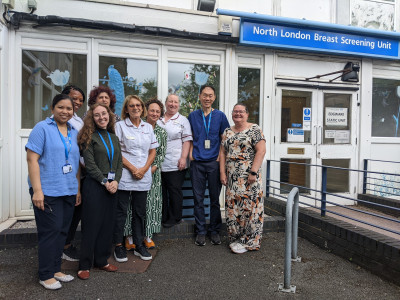
The randomised controlled trial, Prospects, will compare the standard 2D mammogram with the 3D scan to determine which is more effective.
The study is being run at the Royal Free London’s North London Breast Screening Service – one of a number of trusts running the study. The Royal Free London has a target of recruiting a total of 70,000 women to the study by March 2025.
Once complete, researchers will analyse all the data from the study, including what cancers are detected by the scans, the length of time it took to complete the scan and how long was needed for the radiologists to review the scans.
The results will be used to help determine which type of scan should be used as part of the UK’s breast cancer screening programme.
William Teh, director of screening at the Royal Free London, said it is important to understand what benefits the two types of scan could bring to the screening programme.
“There is some evidence that if you have dense tissue, a 3D scans allows radiologists to see cancers more clearly,” he said. “However, we know that 3D mammograms take longer to complete and the radiologists take longer to review the scans since there are more pictures to look through. So these things will be taken into consideration when reviewing the data.
“The study will also look at the type of cancers being detected by the scans. We know that some cancers turn out to be very harmful, while others just sit there and don’t do anything so we need to understand what sort of cancers are being picked up by the respective scans.”
William said he was delighted that recruitment rates at the Royal Free London had improved significantly this summer.
He said: “We are well on the way to hitting the target of 70,000 women for March 2025. At first we were offering participation to women via a leaflet. But now our teams are speaking to women, talking to them about the study and what’s involved and so recruitment has hugely improved.”
Image: William Teh, second right, with the breast screening team
 Translate
Translate